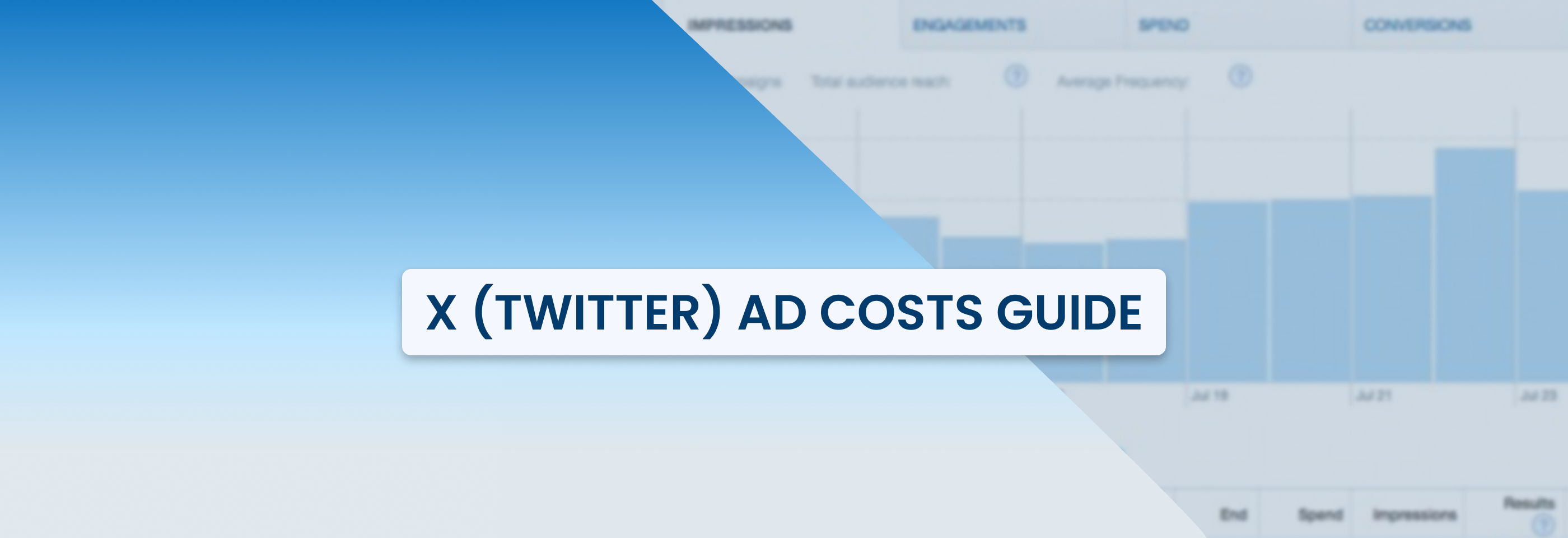Proven Google Ads Strategies for Q4: Stay Ahead of The Competition
2024-11-09
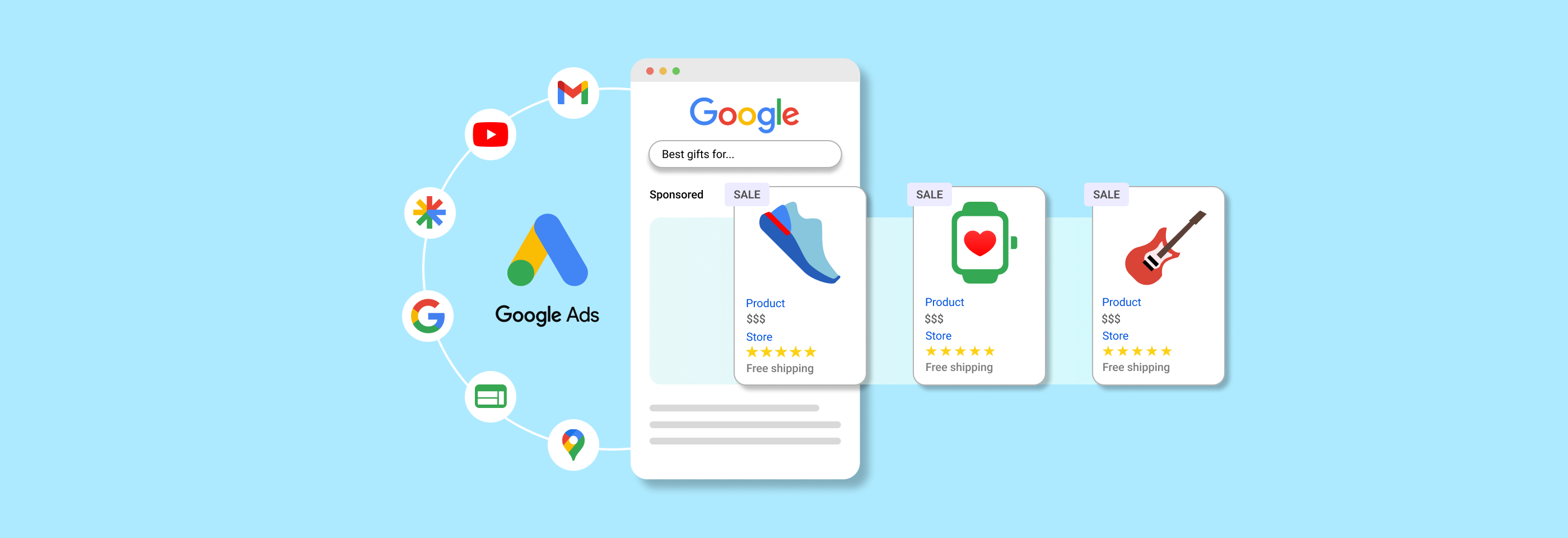
For many businesses, Google ads serve as the backbone of their digital marketing strategy year round. In the Q4, they become even more important – a significant portion of annual sales are coming from Google during this time.
As the holidays approach, it's time to focus on your Google ads strategy if you want to boost your sales and attract new customers. This article will guide you through the main actions that will help you raise your Google ads ROI:
- planning your campaigns,
- creating ads that fit the season,
- staying competitive,
- getting more conversions.
Without further ado, let’s explore the best strategies to ensure your holiday Google ad campaigns can thrive and deliver you the best ROI of the year.
Plan ahead: how to forecast demand for holiday surges
To make the most of the holiday season, you need a solid plan to handle the surge in shopping and keep your Google ad campaigns on track.
Here’s what you can do to get ready early and reach your customers at the right time:
Use Google’s Performance Planner
Performance Planner is Google’s native tool for predicting how well your campaigns might perform in the future. With Performance Planner, you can:
- See forecasts for your campaigns, like expected clicks and conversions;
- Experiment with settings to see how changes might improve results;
- Get budget and bid suggestions that align with your holiday goals;
- Set specific conversion targets (e.g. purchases or ROAS) to make sure your budget is going where it counts.
You can estimate your potential results based on time period, advertising channel, various metrics, conversion goals, and other parameters, and also get suggestions on how to tweak your budget to get the best ROI in your situation.
Basically, Performance Planner helps you look ahead and plan, especially if market changes are making things uncertain.
Ideally, you should start using the Performance Planner 4-6 weeks before the big holiday rush starts. This will give you time to plan when and where to boost your budget and set ROAS targets that make sense for your goals. Per Google’s recommendations, you should also check the Performance Planner weekly since the tool refreshes the forecasts on a daily basis.
For example, if you’re planning a Christmas Google ad campaign, you can set up weekly forecasts starting in early November. When you see that searches for “Christmas gift ideas” relevant to your products are picking up mid-month, you can adjust your budget and ROAS target to reach more holiday shoppers at the peak of interest.
Keep in mind that if you want to use Performance Planner, your ad campaigns should meet certain requirements.
Analyze historical trends
Looking back at your previous holiday campaigns is one of the best ways to predict what’ll work this year. Check out your last year’s data and look for patterns like these:
- When were the best days and times to post ads? Weekends or weekdays? Mornings, middays, or evenings?
- Which keywords drove the most sales? Broad or more precise ones?
- What types of offers caught customers' attention the most? Offers with benefits (like “Holiday Free Shipping”) or offers with discounts (like “50% Off Bundles”) bring in extra sales?
These insights can help you create effective campaigns this time around and set realistic goals that match your past performance. Knowing when people are most likely to interact with your ads can also help you decide on the best days to boost visibility. If last year’s data shows that interest in holiday deals picks up right before Thanksgiving, you’ll know to focus on those days to get the most out of your budget.
Anticipate early shoppers
Holiday shopping starts earlier than ever for many shoppers, and lots of people start looking for holiday deals long before Black Friday and Christmas sales come around. That’s why capturing their attention can help you get ahead before the competition heats up.
To do this, consider running holiday-themed ads in early-to-mid fall to preview your promotions. For example, you can run gift guide ads or offer early-bird specials to get the attention of early shoppers.

Start your promotions before the holidays arrive to capture early shoppers.
This is also a great time to build a list of interested shoppers by offering a sign-up discount or sneak peek at upcoming deals. When the main holiday rush arrives, you’ll already have a list of leads ready to retarget.
Target the full funnel
A full-funnel approach covers every stage of the customer journey — from awareness to conversion — ensuring that no potential customer is left out.
The simplest way to segment your ad campaigns based on the funnel level is to target new audiences at the top, convert interest to purchasing decisions in the middle, and seal the deal at the bottom. Correct Google ads targeting strategies will help you tackle the first aspect of full-funnel campaigns - choosing the right people to show your ads to.
Now, let's see how to approach each funnel stage effectively.
Top of the Funnel
At this stage, you want to make people aware of your offers and generate demand for your products.
Google’s Demand Generation campaigns are a great choice for doing this. These campaigns introduce your brand to new customers even if they haven’t heard of you before, and get them interested in your products. You can start these campaigns as early as mid-October and use display and discovery ads to make your brand visible.
The goal here is simple: make sure potential customers know who you are by the time peak shopping kicks off.
Middle of the Funnel
The middle of the funnel is where curiosity turns into real interest, and the best tool to make that happen is the Performance Max (PMax) campaigns – they help you engage users who’ve already shown an interest in your brand or products.

Target warm audiences with gift ads based on their interests to help them make a choice and get more conversions.
Besides, PMax campaigns show your ads across Google’s entire ad network from search and shopping to YouTube and display – you can reach people wherever they are. There are several ways to use PMax campaigns effectively:
- Focus ad spend on your best-selling products that drive the most revenue – this can help you maximize your ROI by spotlighting items with strong appeal.
- Promote less popular products that still play a role in your holiday lineup – this allows you to show your customers a wider range of options, which can boost growth as holiday shopping peaks.
- Run campaigns with product feed ads without custom creatives – this can save you a lot of time during the busy season.
Also, one of the best strategies for maximizing your results at this stage is using PMax campaigns together with broad match keywords – this is what Google calls the “Ads Power Pair”.
This combination lets Google’s AI find new customers for you while keeping the costs low, especially during the holiday season. Broad match keywords allow you to find people who might not be searching for your exact terms but are still interested in what you’re selling. PMax campaigns help you show your ads across Google’s whole network — YouTube, Gmail, Search, Display, etc.
For example, someone might first see your brand in Google Search after looking up a related keyword, and later, PMax will retarget them on other placements, increasing their chances of converting.
Make sure to consider Google’s tips on how to use the Ads Power Pair effectively:
- Use Smart Bidding: choose a "maximize conversion value" or "maximize conversions" strategy to adjust bidding for better results;
- Separate campaigns by goal: create different campaigns for specific objectives (e.g. customer acquisition vs. retargeting) to keep your targeting more focused;
- Consolidate keywords: use broad match keywords and group them by similar themes for better optimization;
- Add variety: use multiple ad assets (images, sitelinks, logos) and asset generation to help Google AI choose the best ads to show across platforms;
- Use first-party data: use Customer Match to connect with audiences similar to your best customers and get more conversions.
This strategy can help you cover all possible angles, so definitely try it out.
Bottom of the Funnel
Finally, you need to capture conversions and build customer loyalty for your brand. This is where more precisely targeted campaigns come in.
One possible approach is to target people who use your brand’s keywords to search specifically for your products. This can help you keep your ads front and center, preventing customers from getting sidetracked by competitor ads that are also targeting your keywords.
In other words, you’re not only leveraging your own branded keywords but also protecting your conversions from going to your competitors.
There’s also a more proactive approach – targeting your competitors’ keywords. You can reach people who are searching for competitors, grabbing a slice of the market at the critical decision stage. These campaigns expand your reach, capturing the attention of people ready to buy but still exploring options.
Check out our article about Google ads keyword targeting to learn more about the topic.
Put a holiday spin on your ad creatives and copies
If you want to tap into people’s holiday spirit during the last quarter of the year, there’s no better way than using ad creatives that evoke those festive feelings.
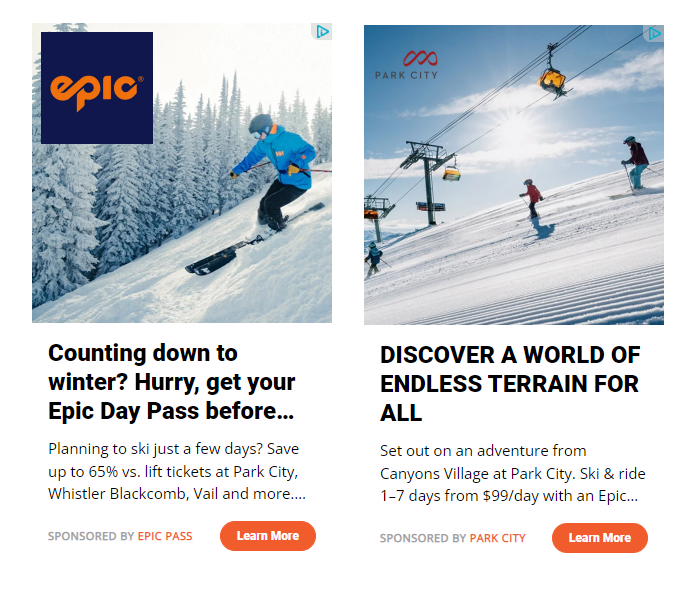 Seasonal visuals are a must for creating a special atmosphere and catching people's attention.
Seasonal visuals are a must for creating a special atmosphere and catching people's attention.
Google's AI tools make it easy to do so. The Product Studio is perfect for creating holiday-themed product images: you can use different templates with festive backgrounds and a scene generator where you simply type in a prompt (like “cozy winter scene”) to place your product in the holiday setting. You can also take advantage of other Google ads AI features to supercharge your holiday creative strategy.
Here are some other ways to make your Google ads get attention in Q4:
- Holiday phrases: include words like “must-have gifts,” “holiday specials,” or “limited-time offers” to create urgency;
- Seasonal colors: use traditional holiday colors, like red, green, gold, and silver, for a festive touch;
- Festive visuals and scenes: add snowflakes, twinkling lights, or cozy winter settings to make your images feel warm and inviting;
- Carousel ads: show multiple products with a carousel and use copies like “gift guide”, “best gifts for…”, and so on;
- Highlight top or new products: draw attention to your best-selling items or new arrivals with attractive visuals and copies.
Another thing to pay attention to is how your ads look across different placements. Consistency in visuals and copies helps you build brand recognition, especially if you’re going to retarget people who already saw your ads.
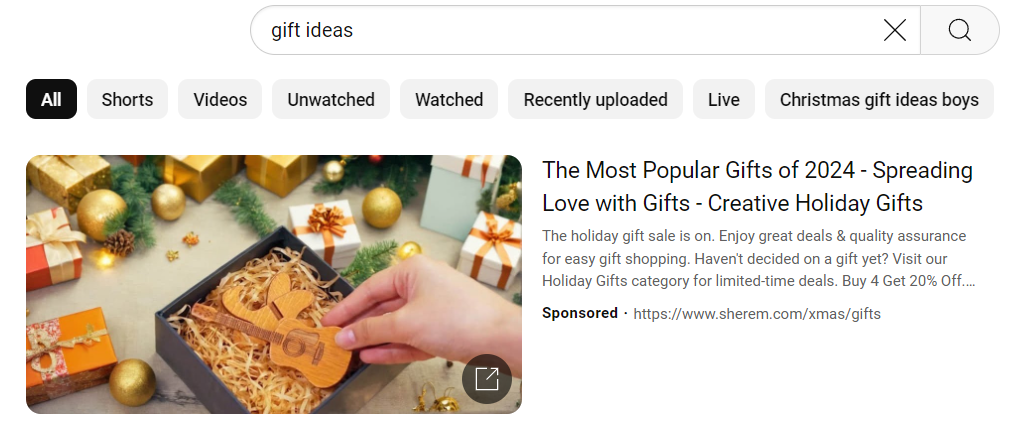
Even if you use YouTube ads, make sure they include the same details as your regular Search or Display ads.
Use similar colors, fonts, and phrases across all ad formats, reinforce the key messages throughout your ads to build familiarity, and repurpose your best-performing assets across different channels. A cohesive theme will make your brand more memorable and drive more conversions.
Use Google ad assets
Holiday shopping is highly competitive, so using customized ad assets for your holiday deals (both limited-time and longer in duration) can be the key to standing out.
Ad assets are all about helping you spotlight your deals, discounts, and special offers directly in your ad copy. If you use them, your ads will be more visible among the others and clearly show what you have to offer, which results in a higher CTR and conversion rate.
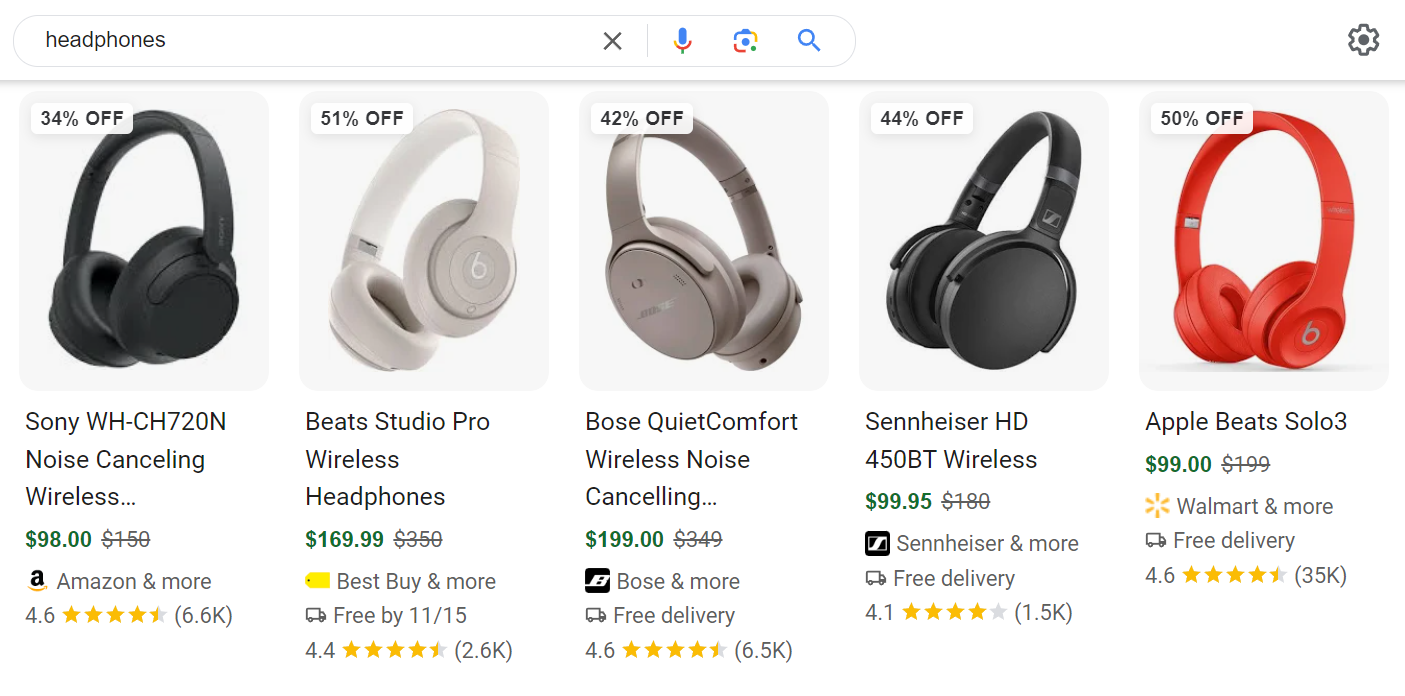
Prices, delivery options, reviews, and product details - this additional information will help people make the right decision.
These can include different types of enhancements: discount badges, strikethrough prices, promotional annotations, etc. that provide users with the most important information right from the start, driving more visibility and engagement.
Here are the types of ad assets you can use:
- Location assets: you can display your business location, hours, photos, and directions to drive more store visits during the holiday season;
- Call assets: you can add a phone number or call button to your ad to make it easy for customers to call you directly and get support or answers to their inquiries;
- Sitelink assets: this helps you direct customers to specific pages on your website – if you have pages dedicated specifically to holidays (like “Gift Guides”), it’s a great way to help interested users find exactly what they’re looking for;
- Callout assets: you can add short phrases to highlight the benefits you provide – “Free Holiday Shipping”, “Gift Wrapping Available”, and any other perk your customers would like to see;
- Structured snippet assets: these help you show predefined categories or services – “Holiday Deals”, “Popular Gifts”, etc. – to quickly display relevant information;
- Price assets: you can show prices for specific products or categories (especially if they’re on sale) to let customers know what they can expect and raise your CTR;
- App assets: you can link directly to your app’s download page if you’re promoting holiday-exclusive app features or discounts;
- Lead form assets: these help you gather leads for your holiday newsletters, exclusive offers, or event registrations.
For example, you can use promotions annotations like “30% off” and “Free shipping”, coupon codes customers can use to avail your offers (e.g. “X% off with promo code…”), local promotions and sale prices, and more. You can also help people discover your products by adding reviews and ratings by using Google’s supported aggregator for product or store ratings.
According to Google, all of these methods can help you boost visibility and get more clicks and conversions.
To differentiate your ad assets during the holiday season, add some festive elements to them:
- Use holiday-themed language: “Gift Season Sale”, “Holiday Special: 20% Off”, etc.
- Highlight limited-time deals: emphasize urgency with phrases like “This Week Only!” or “Ends December X”;
- Include exclusive codes: offer exclusive promo codes like “10% off with code HOLIDAY2024”, and so on for a touch of personalization and holiday spirit.
Keep in mind that timing is everything with holiday promotions. If you set your promotion assets to activate only during specific times (e.g. major holiday events), you can keep your ads fresh and relevant without manual updates.
You can also schedule by region to align your promotions with local holidays or traditions (don’t forget to show relevant prices for each location!).
Track conversions online and offline
Tracking conversions the right way is a must if you want to understand the full impact of your holiday campaigns. You need to capture every sale, no matter if it happens online or in person.
The first thing you want to do is to include store visits as conversions. Many shoppers do their research online but make their purchases in-store, and tracking in-store visits as conversions helps you:
- See the true impact of your Google ads;
- Measure foot traffic generated by specific ad campaigns;
- Optimize your ads based on how they perform both online and offline.
To maximize your results, integrate your offline data with Smart Bidding. This will help you tackle two things at once:
- Drive higher return on ad spend by targeting both online and offline buyers;
- Make your ads more relevant to holiday shoppers who start their purchase journey online but finish it in-store.
It also helps you to better predict what leads to purchases and optimize bids to drive similar results.
Check the Price Insights Report to stay competitive
Prices are a big factor that influences shoppers’ decisions on where to buy during the holiday season – that’s why you should maintain competitive prices.
Google’s Price Insights report will help you understand how your pricing stacks up against the competition. Basically, this report shows whether your products are priced competitively or if there’s a gap between your pricing and the market average.
By regularly checking it, you can make quick adjustments to stay competitive and drive up sales during peak shopping periods.
However, to be able to use the Price Insights report, you’ll need to do the following:
- Upload cost data regularly in Google Merchant Center;
- Set ROAS targets – this makes your data more likely to qualify for these insights.
Once you have the data, put it to work: if you find your prices are higher than average, it's time to strategize and optimize.
Here are some tactics you can try:
- Lower prices on key products: for items with high competition, drop the prices slightly or add a small holiday discount to capture attention;
- Highlight special promotions: use ad assets to call out holiday-specific deals or promotions, like “10% off through December";
- Optimize for price-sensitive shoppers: tailor your ads to highlight your best-value products, especially those that are priced lower than competitors.
For products that already have competitive prices, highlight value-adds like “free shipping” or “extended returns” to make your offers more appealing without changing your prices.
There are also other reports you can use for gauging the market situation, like best-sellers reports for checking the current best-selling products and brands on Google and understanding how your business fits within it.
If you’re sure that your offers are good, consider also using the checkout feature (available in the US), which lets you send people directly from the Product listing to your checkout page.
Recap
This holiday season, you can make your Google ads work smarter and drive real results. Here’s a quick rundown of the best strategies:
- Plan ahead: forecast demand with the Performance planner, set budgets, and tweak bids early so you’re ready for holiday surges.
- Analyze past data: check what worked last year to find your top-performing keywords, ad creatives, and promotions;
- Reach early shoppers: start your holiday ads early to capture interest from shoppers planning ahead;
- Cover the full funnel: run Demand Generation and Performance Max campaigns to guide customers from awareness to purchase;
- Make it festive: use holiday themes in ad creatives and assets to make your ads feel special and relevant.
- Leverage Google’s AI tools for better results; Use ad assets: maximize your reach with call, location, and price assets, plus highlight special holiday deals.
- Track every conversion: capture online and in-store sales, and optimize bids for a higher ROI;
- Stay price-competitive: check the Price Insights report and adjust where needed to win over price-sensitive shoppers.
By following these steps, you’ll boost visibility, stay competitive, and maximize your Google ads ROI for the season. For more tips on getting the most out of your ad spend, check out our guide to optimizing Google ads conversion rates.

